
necklace size guide
A necklace size guide is a comprehensive resource to help you choose the perfect chain length, ensuring it complements your body type, style, and pendant size.
1.1 Why Necklace Size Matters
The right necklace size ensures a comfortable and flattering fit, enhancing your features while avoiding discomfort or an unbalanced look. Proper sizing is crucial for both chain-only necklaces and those with pendants, as it affects how the piece sits on the body. A well-chosen length complements your body type, personal style, and the proportions of any pendant. Standard lengths vary, but understanding your ideal size ensures the necklace drapes elegantly and draws attention to your best features, making it a vital consideration for any jewelry purchase.
1.2 Key Considerations for Choosing the Right Necklace Size
When selecting a necklace size, consider your body type, as longer chains suit taller individuals, while shorter lengths complement petite frames. Pendant size is crucial; larger pendants require longer chains to balance proportions. Chain thickness and material also impact comfort and durability. Personal style plays a role, with chokers and princess lengths being popular choices. Measuring your neck or an existing necklace ensures accuracy. Layering preferences and outfit compatibility should also guide your decision. Ultimately, the right size enhances both aesthetics and comfort, making it a vital factor in your jewelry selection.
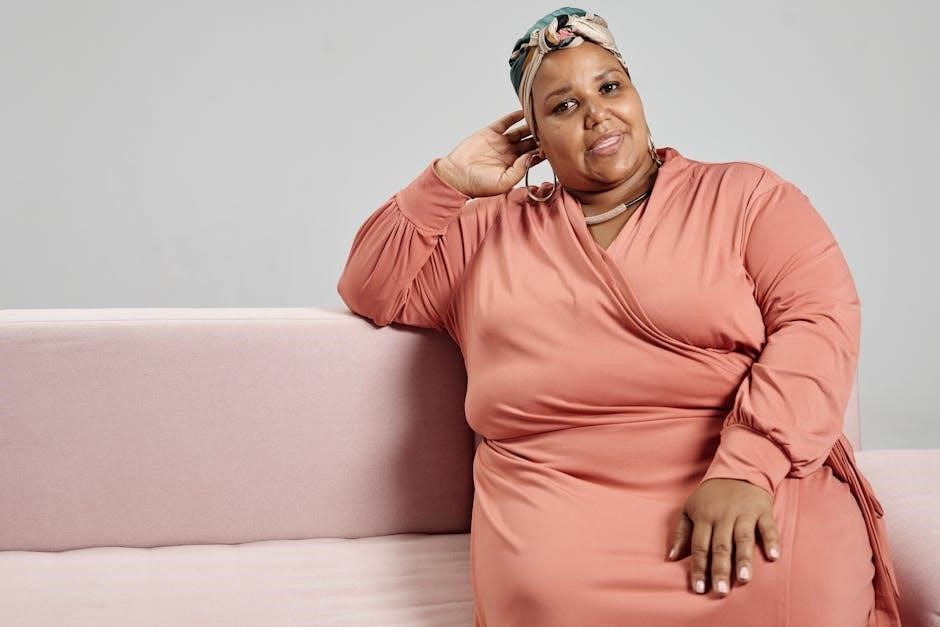
Understanding Necklace Measurements
Necklace measurements typically refer to chain length, a crucial aspect for ensuring the piece sits comfortably and attractively. Standard lengths vary, so measuring accurately ensures the proper fit.
2.1 Standard Necklace Lengths for Women
Standard necklace lengths for women typically range from 16 to 20 inches, with each length serving a specific purpose. A 16-18 inch chain is ideal for chokers, sitting closely around the neck, while 18-20 inches is a classic choice, resting just below the collarbone. Longer lengths, like 22-24 inches, are perfect for layering or making a bold statement. These measurements ensure the necklace complements body type and pendant size, offering a flattering fit for various styles and preferences.
2.2 Standard Necklace Lengths for Men
Standard necklace lengths for men typically range from 18 to 30 inches, catering to various styles and preferences. The 18-20 inch range is a classic choice, sitting close to the collarbone for a sleek, modern look. The 22-24 inch length is versatile, suitable for both pendants and plain chains, while longer lengths like 26-30 inches are often used for statement pieces or layering. These measurements ensure a comfortable fit, complementing different body types and personal styles, while maintaining a balanced and polished appearance. Men’s necklace lengths are designed to enhance both casual and formal attire seamlessly.
2.3 How to Read a Necklace Size Chart
Understanding a necklace size chart is essential for selecting the perfect fit. These charts typically list standard lengths, often ranging from 14 to 30 inches, with specific measurements corresponding to different fits. The chart may categorize lengths as choker, princess, matinee, or opera, each designed for a particular style or body type. To use the chart effectively, measure your neck or an existing necklace to find your ideal length. Match your measurement to the chart, considering whether the necklace will hold a pendant or be worn alone. This ensures a comfortable, flattering fit tailored to your preferences and style.

Factors Influencing Necklace Size
Necklace size is influenced by body type, pendant size, and personal style. These factors help determine the ideal chain length for a flattering and comfortable fit.
3.1 Body Type and Necklace Length
Your body type plays a significant role in determining the ideal necklace length. Petite individuals often look best with shorter chains, such as 16-18 inches, to avoid overwhelming their frame. Taller people can opt for longer lengths, like 20-24 inches, to balance their proportions. Hourglass figures can accentuate their curves with necklaces that fall just below the collarbone, around 18-20 inches. For rectangular body types, longer chains create a slimming effect. Pear-shaped individuals benefit from shorter necklaces that draw attention upward. Understanding your body type helps you choose a necklace length that flatters your silhouette and enhances your natural beauty.
3.2 Pendant Size and Chain Length
Pendant size and chain length must be harmoniously balanced for a polished look. A large pendant pairs well with a longer chain, typically 24 inches or more, to avoid overwhelming the neckline. Conversely, delicate pendants complement shorter chains, around 16-18 inches, for a subtle appearance. The chain’s thickness should also match the pendant’s weight and design. A heavy pendant on a thin chain may look unbalanced, while a bold chain can support a statement piece. Balancing these elements ensures the necklace is both stylish and comfortable to wear.
3.3 Personal Preference and Style
Personal preference and style play a significant role in choosing the ideal necklace size. Some individuals prefer classic, elegant looks with shorter chains, while others opt for trendy, bold statements with longer lengths. Layering necklaces of varying lengths can create a unique, personalized aesthetic. Consider your wardrobe and lifestyle—delicate chains suit everyday wear, while thicker chains or statement pieces elevate special occasions. Ultimately, the right necklace length and style should reflect your individuality and enhance your overall appearance, making you feel confident and stylish.
How to Measure for a Necklace
To measure for a necklace, wrap a string or tape measure around your neck, marking the desired length. Add a little space for comfort and ease.
4.1 Using a Tape Measure
Using a tape measure is the most accurate way to determine necklace size. Wrap the tape around your neck, ensuring it’s level and not too tight. Adjust for comfort, leaving a little space. For chokers, measure snugly, while longer necklaces should sit lower. Note the measurement in inches or centimeters. Standard lengths for women range from 14 to 20 inches, and for men, 18 to 24 inches. This method ensures a precise fit, especially when paired with an adjustable clasp.
4.2 Using a String or Ruler
For a precise measurement without a tape measure, use a string or ruler. Wrap the string around your neck, marking where it overlaps with a pin or finger. Lay it flat and measure the length with a ruler. This method ensures accuracy, especially for chokers or longer chains. Record the measurement to determine your ideal necklace size, ensuring it fits comfortably while suiting your style and body type. This approach is simple and effective for anyone without a tape measure handy.
4.3 Measuring for a Choker Necklace
Measuring for a choker necklace requires precision to ensure a snug yet comfortable fit; Wrap a flexible string or tape measure around the base of your neck, keeping it level and close to your skin. Note the exact point where the string overlaps to determine your size. For chokers, add a small amount of slack (about 1/4 inch) to the measurement for comfort. Standard choker lengths typically range from 14 to 16 inches for women and 16 to 18 inches for men. Accurate measurement ensures the choker sits perfectly, enhancing both style and comfort.
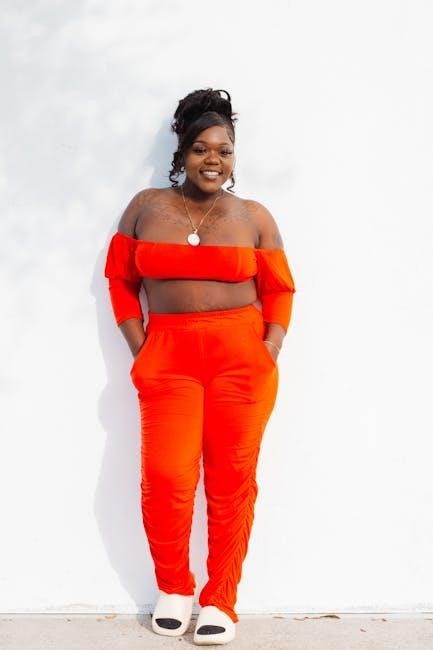
Popular Necklace Styles and Their Ideal Lengths
Explore popular necklace styles, such as chokers, princess, matinee, and opera, each with distinct ideal lengths to suit various body types and fashion preferences perfectly.
5.1 Choker Necklaces
Choker necklaces are designed to fit snugly around the neck, typically measuring 14-16 inches for women and 16-18 inches for men. They create a trendy, versatile look suitable for various outfits. Chokers can be adorned with small pendants or left plain for a minimalist style. The tight fit ensures the necklace stays in place, making it ideal for everyday wear or special occasions. When choosing a choker, consider the material’s comfort and the pendant size to ensure a balanced appearance. Proper sizing is key for both style and comfort, making chokers a popular choice across different fashion preferences.
5.2 Princess Necklaces
Princess necklaces are a popular choice, typically measuring 18-20 inches in length. This style is versatile and elegant, sitting just below the collarbone, making it flattering for most necklines. Ideal for both casual and formal wear, princess necklaces are perfect for everyday use or special occasions. They can be paired with small to medium-sized pendants or worn alone for a sleek look. The 18-20 inch range ensures the necklace hangs gracefully, complementing various outfits and body types. This length is also great for layering with shorter or longer chains, offering endless styling possibilities.
5.3 Matinee and Opera Necklaces
Matinee necklaces typically measure 22-24 inches, making them ideal for semi-formal events or everyday wear. They sit just below the bust, creating a balanced look. Opera necklaces are longer, ranging from 28-34 inches, perfect for formal occasions. They hang down to the stomach area, adding a dramatic flair. Both styles are versatile, suitable for layering or pairing with bold pendants. Matinee necklaces complement V-necklines, while opera necklaces accentuate evening gowns. Their extended lengths offer a sophisticated, elegant appearance, making them a favorite for special events and statement pieces.
Styling Tips for Different Necklace Lengths
Layer shorter necklaces for a trendy look or pair longer ones with simple outfits. Mix metals and textures to add visual interest while complementing your personal style.
6.1 Layering Necklaces
Layering necklaces is a stylish way to add depth to your look. Start with a shorter chain, like a choker or princess length, and add longer necklaces for contrast. Mix metals and textures to create visual interest. For example, pair a delicate gold chain with a bold silver piece. Consider your outfit—layering works well with both casual and formal styles. Balance proportions to avoid overwhelming your frame. Experiment with different combinations to find a look that reflects your personal style and complements your features. This technique allows you to wear multiple pieces effortlessly, enhancing your overall appearance.
6.2 Choosing the Right Outfit for Your Necklace
Selecting the right outfit for your necklace ensures it stands out while complementing your overall look. Consider the necklace length and style when pairing with clothing. Longer necklaces, like opera or matinee lengths, pair well with V-necklines or open-collar shirts, drawing the eye downward. Shorter necklaces, such as chokers or princess lengths, complement crew necks or scoop necks. Delicate chains are ideal for casual or formal outfits, while bold or chunky designs can elevate simpler looks. Mix metals or textures to add depth, but ensure the necklace doesn’t overpower the outfit. Balance proportions to enhance your frame and create a polished appearance.
6.3 Mixing and Matching Necklace Styles
Mixing and matching necklace styles can create a unique, personalized look. Start with a base chain, like a delicate bar or minimalist design, and layer with shorter or longer necklaces. Combine textures, such as smooth chains with beaded or pendant necklaces, to add depth. Balance bold or chunky pieces with simpler styles to avoid overwhelming the outfit. Consider personal style and occasion—layered necklaces work well for casual looks, while a single statement piece suits formal events. Experiment with proportions and designs to find a combination that reflects your aesthetic and enhances your features.
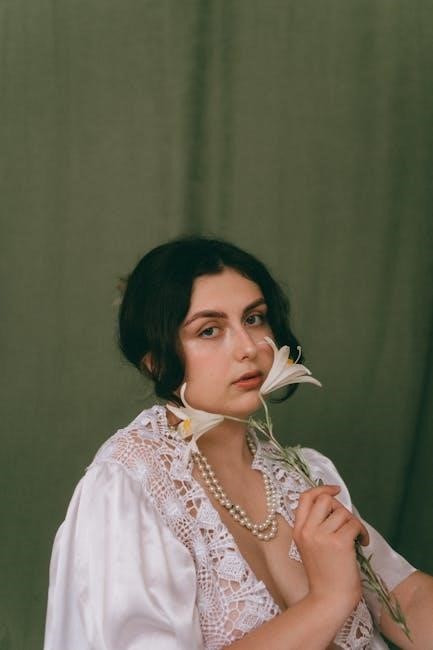
The Role of Clasps and Adjustability
Clasps and adjustability ensure a secure, comfortable fit, with options like lobster claw or magnetic closures. Adjustable chains offer versatility, catering to various neck sizes and styling preferences easily.
7.1 Types of Necklace Closures
Necklace closures are essential for security and ease of use. Common types include lobster claw, spring ring, toggle, magnetic, and bar closures. Lobster claw clasps are durable and secure, while spring rings are simple and easy to use. Toggle clasps offer a stylish option but may be less secure for active wear. Magnetic closures provide effortless fastening, ideal for delicate chains but not suitable for heavy pendants. Bar closures are sleek and minimalist, offering a modern look. Each closure type balances aesthetics, functionality, and practicality, ensuring a comfortable and secure fit for various necklace styles.
7.2 Adjustable Chains and Their Benefits
Adjustable chains offer unparalleled versatility, allowing necklaces to fit various neck sizes. This feature is ideal for gifting or sharing jewelry, as it accommodates different wearers. Adjustable chains also enable styling flexibility, letting you layer necklaces effortlessly or pair with diverse pendants. They eliminate the need for resizing, making them a practical choice. Durable and easy to use, adjustable chains cater to both men and women, ensuring a secure and customizable fit. This adaptability enhances the overall wearing experience, making adjustable chains a popular choice for everyday wear and special occasions.
7.3 How to Ensure a Secure and Comfortable Fit
To ensure a secure and comfortable fit, consider chain thickness, clasp type, and proper measurement. A sturdy clasp, like a lobster claw or toggle, prevents accidental opening. Thicker chains are more durable and less likely to break. Measure your neck accurately, leaving a little room for comfort. Adjustable chains offer flexibility, accommodating different outfits or body types. Choose materials that suit your skin type to avoid irritation. Balancing style and practicality ensures your necklace stays secure and feels comfortable all day, enhancing your overall jewelry-wearing experience.
Materials and Their Impact on Necklace Size
Materials influence necklace size through chain thickness, weight, and durability. Thicker chains may require longer lengths for comfort, while delicate metals need shorter, more precise fits to avoid discomfort or damage.
8.1 Chain Thickness and Weight
Chain thickness and weight significantly impact necklace size. Thicker chains, often used for bold styles, may require longer lengths for comfort, while thinner chains suit delicate designs. Heavier materials, like gold or silver, can feel cumbersome in longer lengths, necessitating shorter, more balanced fits. Lightweight options, such as sterling silver or vermeil, allow for extended wear without discomfort. Adjustability in clasps ensures a secure, personalized fit, accommodating varying chain thicknesses and weights for optimal comfort and style.
8.2 Material Durability and Maintenance
Material durability and maintenance are crucial when selecting a necklace size. Precious metals like gold and silver are durable but require regular polishing to maintain their shine. Platinum and titanium offer exceptional strength but are heavier, affecting comfort. Stainless steel and leather necklaces are low-maintenance and ideal for everyday wear. Proper care, such as avoiding harsh chemicals and storing pieces separately, extends lifespan. Understanding material needs ensures the necklace remains a lasting accessory, complementing its chosen size and style for years to come.
8.3 Metal Allergies and Sensitivities
Metal allergies and sensitivities play a significant role in choosing the right necklace size and material; Nickel is a common allergen found in many metals, causing skin irritation or rashes. Opting for hypoallergenic metals like titanium, surgical stainless steel, or solid gold (14k or higher) minimizes such reactions. Sterling silver, while less reactive, can still cause issues for some. Coatings like rhodium plating can help, but proper maintenance is key. Always consider personal sensitivities when selecting materials to ensure comfort and longevity of the necklace, regardless of its size or style.
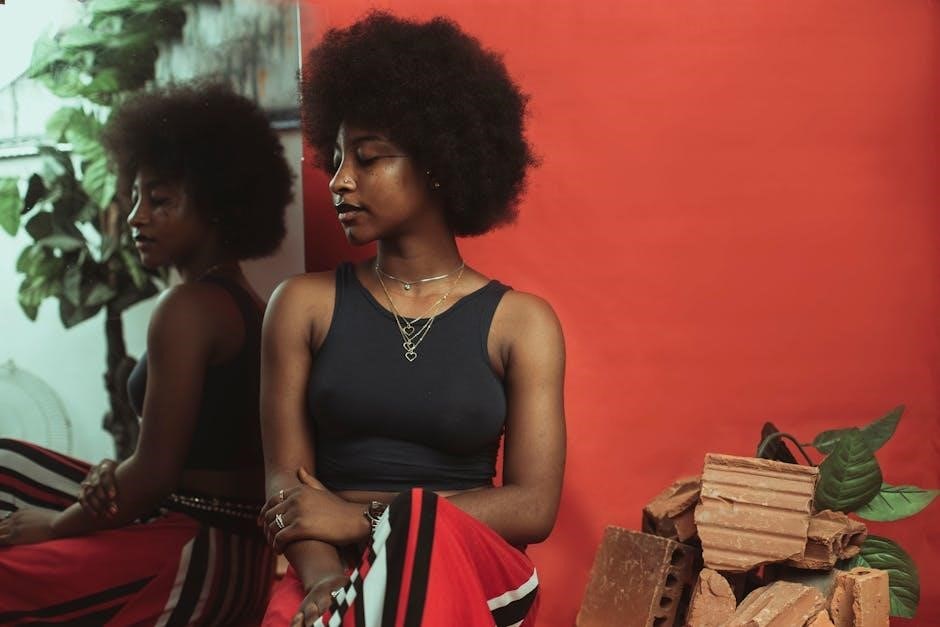
Cultural and Fashion Trends in Necklace Sizes
Cultural heritage and fashion trends significantly influence necklace sizes, with styles varying across eras and regions, reflecting historical and contemporary preferences in jewelry design and personal expression.
9.1 Current Fashion Trends in Necklace Lengths
Current fashion trends emphasize versatility in necklace lengths, with a rise in popularity of adjustable chains and layerable styles. Delicate chokers and bold, oversized pendants are dominating modern designs, catering to diverse aesthetics. Minimalist chains, often worn alone or layered, remain timeless, while statement pieces with longer lengths continue to make a fashion impact. Personalization, such as name necklaces and custom engravings, is also a key trend, allowing individuals to express their unique style. These trends reflect a blend of classic elegance and contemporary flair, offering something for every preference and occasion.
9.2 Cultural Influences on Necklace Styles
Cultural influences significantly shape necklace styles, with diverse traditions inspiring modern designs. African beadwork necklaces often feature vibrant colors and symbolic patterns, while Indian jewelry boasts intricate craftsmanship with precious gems. Middle Eastern designs frequently incorporate opulent gold and elaborate details. Asian cultures, such as Chinese and Japanese, favor minimalist styles with symbolic motifs like dragons or cherry blossoms. These cultural elements not only reflect heritage but also blend seamlessly into contemporary jewelry, offering a rich tapestry of inspiration for necklace enthusiasts worldwide. This fusion of tradition and modernity creates timeless pieces that resonate across cultures.
9.3 Historical Evolution of Necklace Sizes
Necklace sizes have evolved significantly over centuries, reflecting cultural and historical contexts. In ancient times, necklaces were often shorter, symbolizing status and spirituality. During the Middle Ages, longer chains became popular, sometimes reaching the waist. The Renaissance saw a shift toward delicate, shorter necklaces, while the Victorian era favored ornate, layered designs. The 20th century introduced modern variations, with standard sizes emerging to cater to diverse styles and body types. This historical journey highlights how necklace lengths have adapted to fashion trends, societal norms, and artistic expressions, shaping the versatile options available today.
Related Posts

self guided cycling holidays in france
Discover France’s hidden gems with self-guided cycling holidays in France. Enjoy scenic routes, charming villages, and local cuisine at your own pace.

honeywell cross reference guide pdf
Get the Honeywell cross reference guide in PDF. Find compatible parts effortlessly and streamline your workflow.
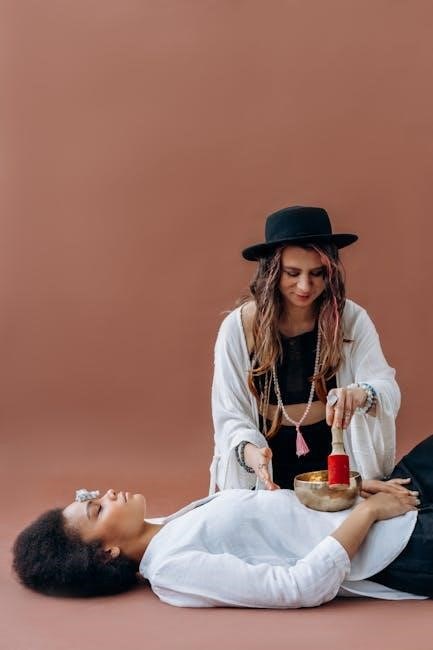
optoma projector user guide
Master your Optoma projector with our comprehensive user guide! Discover setup, troubleshooting, and maintenance tips to enhance your viewing experience.